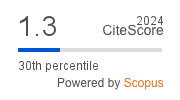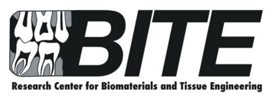The effect of X-ray irradiation to the formation of polychromatic erythrocyte cell micronucleus in Wistar rats (Rattus norvegicus)
Downloads
Background: Panoramic and cephalometric radiography is very important for diagnosis, treatment plan, and evaluation of orthodontic treatment results. Panoramic and cephalometric radiography are frequently performed at the same time, causing DNA damage and chromosome aberration. Purpose: This study aims to analyse the effect of X-ray exposure in panoramic and cephalometric radiography on micronuclei cell numbers. Methods: Laboratory-based analyticalstudy with 60 healthy-male Wistar rats weighing 200–300 grams divided into 6 treatment groups (n=10). The control group: without radiographic exposure, the treatment group 2: using panoramic radiographic exposure followed by cephalometric, and the treatment group 3: using panoramic radiographic exposure and 24 hours later performed cephalometric radiographic. The unit of analysis was the polychromatic erythrocytes of mice cell, were examined 24 hours and 48 hours after irradiation had been finished. The polychromatic erythrocytes were examined using May-Gruenwald-Giemsa staining and 100x magnification under a microscope with 2000 cells per view. Data obtained were analysed using the SPSS 20 version software. The mean and standard deviations were calculated for each clinical parameter, and a one"way ANOVA statistical test of significance was used. Statistical significance was set at p<0.05. Results: The analysis showed a significant increase (p<0.05) in the number of micronucleus in groups that used panoramic radiographic exposure followed by cephalometric. Conclusion:X-ray radiation can increase the number of micronucleus in polychromatic erythrocyte cells in rats.
Downloads
Shah N, Bansal N, Logani A. Recent advances in imaging technologies in dentistry. World J Radiol. 2014; 6(10): 794–807.
Heil A, Lazo Gonzalez E, Hilgenfeld T, Kickingereder P, Bendszus M, Heiland S, Ozga A-K, Sommer A, Lux CJ, Zingler S. Lateral cephalometric analysis for treatment planning in orthodontics based on MRI compared with radiographs: A feasibility study in children and adolescents. PLoS One. 2017; 12(3): e0174524.
WrzesieÅ„ M, Olszewski J. Absorbed doses for patients undergoing panoramic radiography, cephalometric radiography and CBCT. Int J Occup Med Environ Health. 2017; 30(5): 705–13.
Bogdanova N V, Jguburia N, Ramachandran D, Nischik N, Stemwedel K, Stamm G, Werncke T, Wacker F, Dörk T, Christiansen H. Persistent DNA double-strand breaks after repeated diagnostic CT scans in breast epithelial cells and lymphocytes. Front Oncol. 2021; 11: 634389.
Kloosterman WP, Hochstenbach R. Deciphering the pathogenic consequences of chromosomal aberrations in human genetic disease. Mol Cytogenet. 2014; 7(1): 100.
Plamadeala C, Wojcik A, Creanga D. Micronuclei versus chromosomal aberrations induced by X-Ray in radiosensitive mammalian cells. Iran J Public Health. 2015; 44(3): 325–31.
Luzhna L, Kathiria P, Kovalchuk O. Micronuclei in genotoxicity assessment: from genetics to epigenetics and beyond. Front Genet. 2013; 4: 131.
Jain AK, Pandey AK. In vivo micronucleus assay in mouse bone marrow. Methods Mol Biol. 2019; 2031: 135–46.
Roos WP, Thomas AD, Kaina B. DNA damage and the balance between survival and death in cancer biology. Nat Rev Cancer. 2016; 16(1): 20–33.
Reisz JA, Bansal N, Qian J, Zhao W, Furdui CM. Effects of ionizing radiation on biological molecules--mechanisms of damage and emerging methods of detection. Antioxid Redox Signal. 2014; 21(2): 260–92.
Miller MA, Zachary JF. Mechanisms and morphology of cellular injury, adaptation, and death. In: Pathologic Basis of Veterinary Disease. Elsevier; 2017. p. 2-43.e19.
White SC, Pharoah MJ. Oral radiology: principles and interpretation. 7th ed. St. Louis: Mosby; 2013. p. 154.
Preethi N, Chikkanarasaiah N, Bethur SS. Genotoxic effects of X-rays in buccal mucosal cells in children subjected to dental radiographs. BDJ open. 2016; 2: 16001.
Kirkland D, Kasper P, Martus H-J, Müller L, van Benthem J, Madia F, Corvi R. Updated recommended lists of genotoxic and non-genotoxic chemicals for assessment of the performance of new or improved genotoxicity tests. Mutat Res Genet Toxicol Environ Mutagen. 2016; 795: 7–30.
Broustas CG, Xu Y, Harken AD, Garty G, Amundson SA. Comparison of gene expression response to neutron and x-ray irradiation using mouse blood. BMC Genomics. 2017; 18(1): 2.
Yamamori T, Sasagawa T, Ichii O, Hiyoshi M, Bo T, Yasui H, Kon Y, Inanami O. Analysis of the mechanism of radiation-induced upregulation of mitochondrial abundance in mouse fibroblasts. J Radiat Res. 2017; 58(3): 292–301.
Kalsbeek D, Golsteyn RM. G2/M-phase checkpoint adaptation and micronuclei formation as mechanisms that contribute to genomic instability in human cells. Int J Mol Sci. 2017; 18(11): 2344.
- Every manuscript submitted to must observe the policy and terms set by the Dental Journal (Majalah Kedokteran Gigi).
- Publication rights to manuscript content published by the Dental Journal (Majalah Kedokteran Gigi) is owned by the journal with the consent and approval of the author(s) concerned.
- Full texts of electronically published manuscripts can be accessed free of charge and used according to the license shown below.
- The Dental Journal (Majalah Kedokteran Gigi) is licensed under a Creative Commons Attribution-ShareAlike 4.0 International License

















